Alex Birlo on January 12, 2023
The title of this review must certainly cause slight confusion. But, if asked to summarize my impression of one of the most hyped games of 2022 – these words would perfectly describe the feelings Santa Monica Studio left me with, by the end of the credits. And this is what I will try to convey through this review.
The story is a great dive back, into that beautiful and creatively reimagined interpretation of Norse mythology from the previous game. But do not expect it to be as coherently ordered and well-paced as in the 2018 God of War.
At the beginning of the story, we find Kratos and Atreus a little before the last scene in the 2018 game.
Before Thor arrives at their doorstep, Kratos and Atreus are in the middle of a daily routine – which will be a reoccurring theme in cutscenes throughout the story here. Scenes where they eat, or hunt, or sit together, while adding to the “believability” of their relationship and their characters, unfortunately fill the screen time with uneventful and unproductive moments that ignore story development, in favor of character development.
I personally see something in this approach. Although I fully understand it is detrimental to the story progress and pace, I also feel that those quiet and low moments say a lot, without any actual voice lines. When the character hesitates and simply sits to stare out a window, or when they slowly eat and look into their plates in silence – it conveys hesitation, doubt, and internal contemplation better than anything they could have said out loud.
But the ominous moment of Thor’s arrival is interrupted, because actually it is Thor and Odin who came to “parlay” with Kratos. They propose a deal that Kratos refuses and that is what sets our heroes on their journey… but only after Kratos gets a good “start of the game boss fight” with Thor, repeating the quip of the first game.
The writing is still top of the class, though I do have one of my biggest quarrels with the game in this section, more than others.
I will start from afar.
A sign of good writing in video games, is when the developer manages to keep the player engaged with a good story that introduces both development of the narrative and new gameplay elements that make sense.
“God of War: Ragnarök” does that very well. When you begin to feel like you are settling into a repetitive routine, they throw some story twist or a new tool for you to explore more of the world.
But the story suffers from the fact that it is so grand.
What I mean by that, is that the 2018 “God of War” was a narrower and a very story focused adventure game, with only elements of RPG and world exploration. They managed to strike a good balance between exploring for loot and not losing sight of the story. Because the story was way simpler. There was a singular goal in mind, from the very beginning.
While in “Ragnarök”, Santa Monica almost made something akin to an “Open World RPG”. The theme is massive – fate and whether you can avoid it, or are you doomed to walk the path of the prophecies. There is no specific goal per se, there are only set people that “oppose” the heroes, and many things that trouble the characters and their friends.
You end up feeling all over the place. With the story being more of a series of separate events about one place and then the other. The link is just the fact that these events are all surrounding the singular theme of Ragnarök and whether it should start or not.
Many stages in the journey do not even feel like they are initiated by Kratos and Atreus. Instead, there are random people that keep showing up and deciding to do something, that causes the father and son to simply react to the circumstances.
Unfortunately, that both means that there is a bigger cast of interesting characters present, and that most of them do not get enough screen time to fully justify motivations, change of moods, or really explore who they are.
The ominous prophecy from the end of the previous game, even somehow, gets nearly forgotten. I never saw the moment in the story where it was supposed to happen, and I never saw the exact moment when the characters did anything with it. Things simply kept happening – and that is it.
But thanks to all the above-mentioned, in a strange way, anyone can play “God of War: Ragnarök” while practically ignoring the events of the 2018 game.
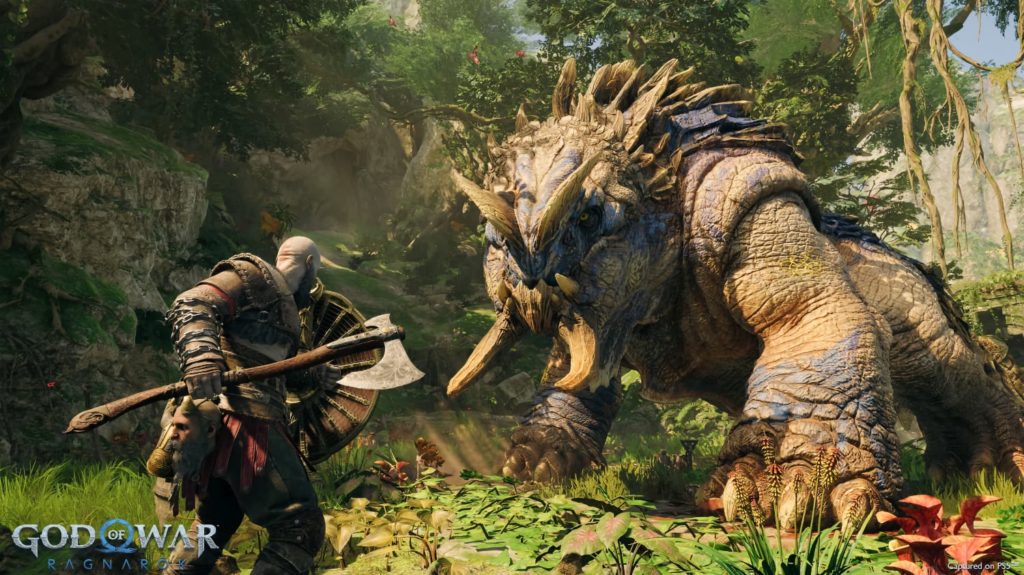
To speak of the world of “God of War: Ragnarök” is to speak of another amazing example of a decades old studio, showing the best of their artistic creativity.
The grand setting of Ragnarök means that we are dealing with a disaster that is destined to change the entire world, meaning all the realms.
While it is odd how accidents and circumstances end up being the reasons for you moving from realm to realm, it is nonetheless thrilling to finally visit the God of War artistic interpretation of all the Norse realms.
Every realm is distinct in its visuals and threats you will encounter. And while not all of them are particularly big, they all present a look at an entire world.
There are realms that are massive hubs, that branch out into locations to explore, and side quests to complete. Each is unique and follows the lore and themes of the realm it is in.
Although not everything is perfect here either.
The more important realms, the ones that are big branching hubs, almost pretend to be an open world where you can go in any direction. And while this mostly works, it is not quite there.
As a completionist, I aimed to do every side quest and collectible in a location, to be able to upgrade my gear to its best, before the next leg of the journey. So I ended up having long stretches of gameplay, where all I was doing were puzzles, bosses and opening reward chests at the end of a challenge.
It is normal for games, and the dozens of voiced conversations between the characters as they travel, do a great job of filling in the silence.
But the “open world” part, ultimately ended up outstaying its welcome in my mind. By the time I reached the third realm, I began seeing a pattern that was so obvious, that each realm ended up feeling like a “box” rather than a world. And a box with objectives, that most of the time could be explored only in a certain order anyway.
This “box” feeling would only get amplified by invisible walls in realms that were entirely linear and not open to explore.
Which ultimately made me wonder the same thing as I had back with Metro Exodus – should have they went so “open world” in the first place, if it hurts the pace of the story so much and is not the main focus? It starts slow, with long stretches of the story not moving forward really as you explore. And then suddenly rolling faster and faster towards the end, trying to rush to a conclusion before it runs of screen time.
A weird complaint, that I did not expect to really voice here, but I have to, since it came to me as a shocker – the graphics.
While I understand that “God of War: Ragnarök” is a cross-generational game, it looks awkward in places. When compared side by side to “Horizon: Forbidden West” for example, which is also a cross-generational game, the visuals are actually way less impressive.
Think about it – Horizon is an actual open world, with massive seamless environments. While God of War is a semi open world, with locations being divided by loading sections.
Underneath, I’ll just provide some of my own screenshots capturing some lighting, foliage, water and character textures. I made them from both games on a PS5, with both games running in “Performance Mode”.
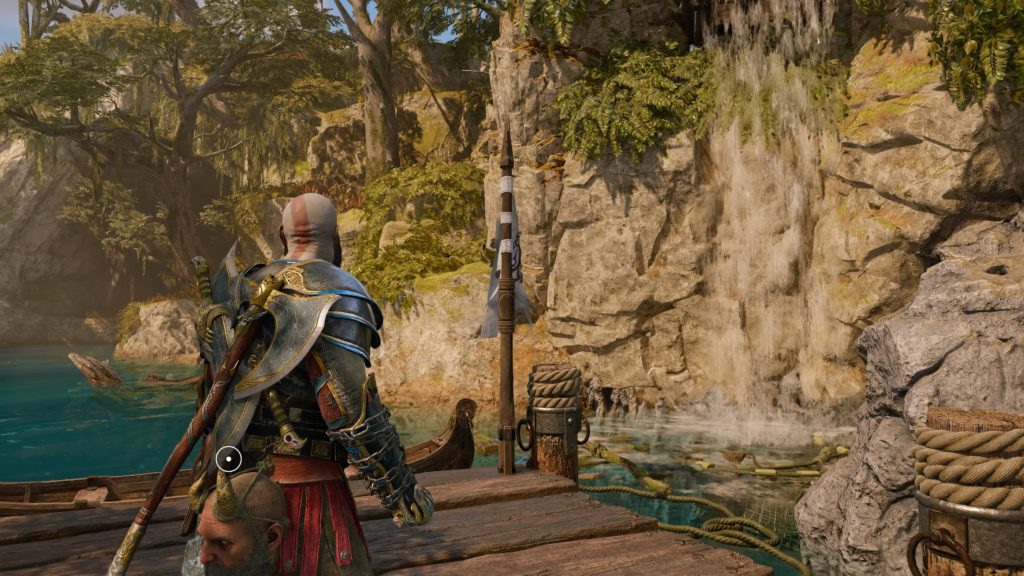
Compare the rock texture, ropes, and foliage to the one below
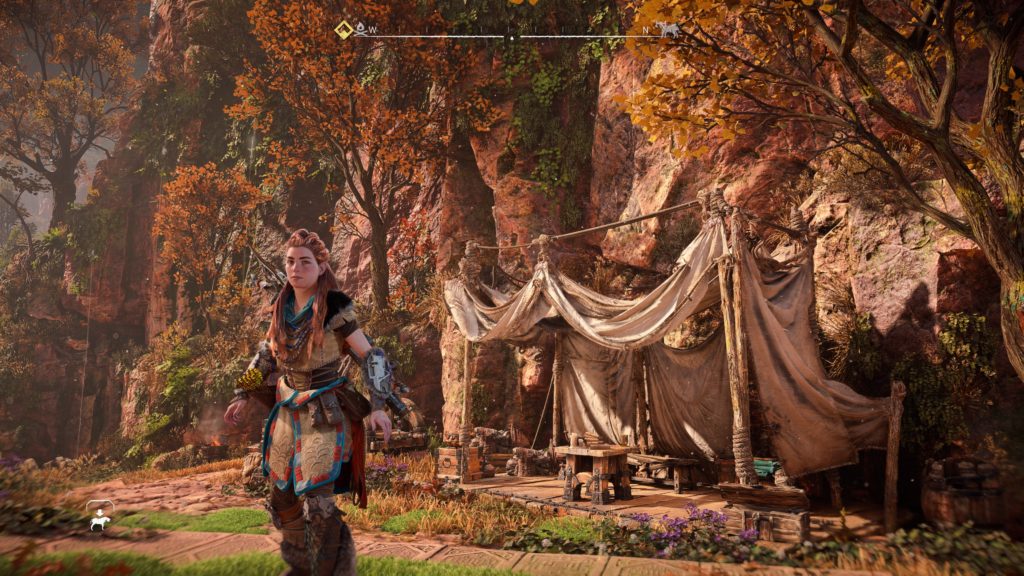
The grass at the very bottom is popping and the cloth on the tent is almost photorealistic
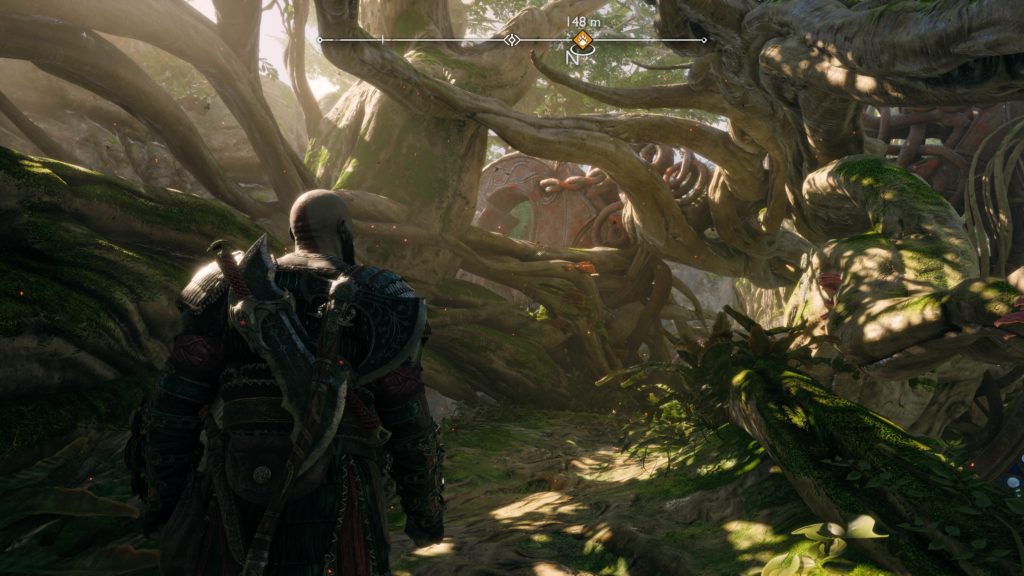
This is one I was really surprised by, because on the top you see amazing lighting, but the ground below is weird
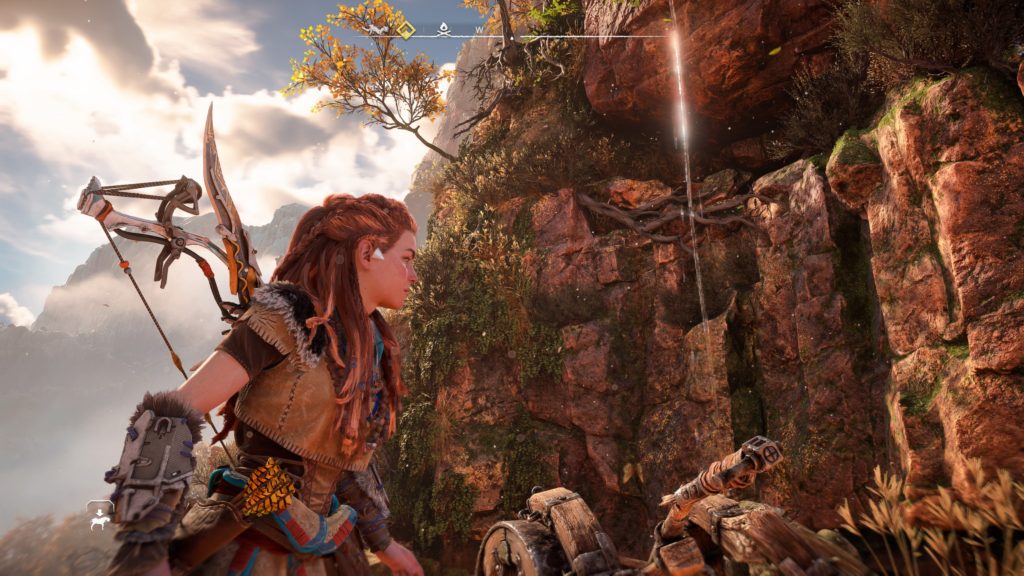
The way the foliage looks natural on the cliffside, and the sun reflects from the water stream, is impressive
While the character details are definitely much better in God of War, the environments are so much better in Horizon. And that is not because of the difference in color saturation…
When playing on performance mode both games are still very pretty, but the longer you stare at God of War, the more you notice strange things like the mud and the water effects being weird, and looking good only on animated waterfalls, or the fog getting a little bit too thick to cover up distant objects.
Gameplay in “God of War: Ragnarök” is a nice attempt at making the game more like an RPG, with loads of objectives to explore in massive locations. More build options, more side quests, and more activities to partake in. But after the initial “wow” moment, many will feel it is not perfect.
I would like to start with something that I think is ultimately the most important part of God of War gameplay – the fighting.
It literally feels the same as in the previous game. And you will find yourself mostly using the same tactics as in the 2018 game.
And THIS IS GOOD! Because there is no need to “fix” what is not broken, and this is a perfect example of that.
The combos and animations all click perfectly, and have a satisfying meaty heaviness to it. Coupled with movement and certain attacks being so well combined with the PS5s haptic feedback and adaptive triggers – this is a guaranteed delight, that will accompany you throughout the entire game.
All they had to really do, is actually all they really did – build upon what they had. More varied combos, more diverse enemies that often require swapping weapons, because of elemental resistances, and more vertical fighting arenas.
Every encounter is designed in a spot, where you will have to traverse the environment up and down, to reach enemies, or reposition for devastating jump attacks.
Your companions have more abilities to assist in combat and can empower your own combos as you fight, creating some really epic encounters, with particularly cool looking team work.
All of this is also coupled with the addition of a new weapon much later into the game. I will not spoil what it is, but I have to mention my thoughts on it. Because the whole introduction of it into the game, is perhaps the best weapon “story setup” I have seen in a long while (since the chaos blades). And it feels so natural for Kratos, that you can almost feel his delight as you use it for the first time.
Another addition some did not like, but I definitely did – more than one shield.
Now you are not locked into using a single shield, but instead you can craft and equip several different shields that change the “philosophy” of how you block.
There is a shield that has the highest blocking capabilities, and can stop and reduce damage from unblockable attacks. Or there is one that accumulates energy the longer you hold it up, and then can be stricken to release an AOE sound attack.
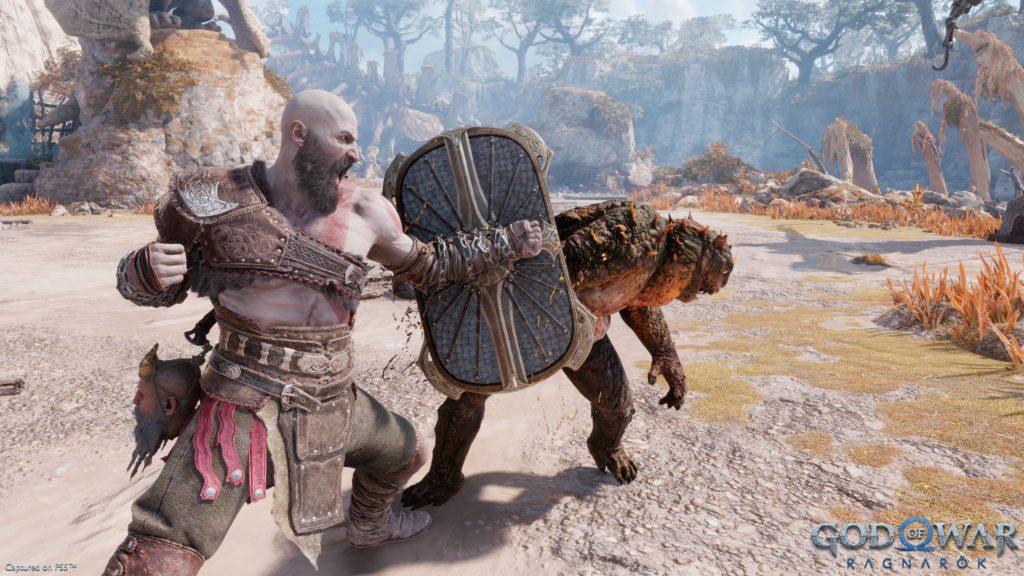
Gear and armor in this game is a blend of what started in the 2018 installment, and a bunch of additions that not all hit well, unfortunately.
Starting with armor. You will feel that it attempts to give you some build diversity to support the way you play and gain tangible effects, but you might eventually just drop this idea, because you can just put on whatever looks better.
There are three armor pieces – Chest, hands, belt. There are complete sets, but only the hands and belts have set bonuses. Meaning that if you get the hands and belt parts of the same armor together, you will have some bonus. And I must say that these can be as crazy as 30% damage reduction, for example.
The chest piece has its separate effect, that is less statistical and more gameplay oriented since it has to be triggered, so these can be swapped out of the set.
All armor also comes with stats, that you might be partially familiar with from the previous game, although I personally am one of those people that ignored them in 2018, and felt their effect on gameplay more in Ragnarök.
Runic – ability power.
Cool down – affects how often you can use your Runic and artifact abilities.
Vitality – amount of health.
Luck – the chance of “drop” from enemies (affects health drops as well).
Strength – your damage output.
Defense – protection from damage received.
Though by the end of the game, you can combine weapon and armor effects to such a degree that you will have most of these stats pretty high and none of it really matters. But focusing on one or two in the beginning, makes a noticeable difference in how you are able to fight.
To upgrade your armor, you have to collect resources. And this is an omnipresent task that is so important, that you can literally call it “farming for resources” despite it not really being an RPG where you “farm” for gear or loot… but you sort of do.
Higher rarity resources become available only later, as the game progresses. So the development of the character is more or less controlled by the flow of the story.
Then, you have upgrades to your weapons and shields. Since you cannot really change the weapons much, these upgrades still can be only in the form of hilts and “Ronds”, that add to the above-mentioned stats. These are less significant, and something that you simply begin to ignore later on in the game.
The two meaningful pieces of gear you get, are an amulet that can be modified and have runes slotted into it. And artifacts you collect and can fix, to use them as a third ability in combat.
Sets of runes, slotted into the amulet, can have passive effects or be activated if you have enough Runic, Cool down, Vitality, Luck, Strength or Defense score. These can be very useful, so they are also a nice addition.
On the other hand, the artifacts are somewhere in the middle. Some of them can be really powerful, and some have effects that you barely notice. But regardless, unless you have a “Cool Down” build, you will rarely use them in combat. Since they act like an ultimate ability, and their downtime after each use is pretty high. So you will either be done with the fight by then, or die. I would just end up forgetting I even have them.
One thing that comes with the attempt of creating a more complex RPG element in the game, is the fact that the user interface is no longer slick and simple.
I played through the entire game, and finished most of the side activities you can, but I still did not get used to the interface – I simply chose to ignore it.
All of the previously mentioned things, like the weapons and their handles, all the shields you own (and even those you do not) and their “Ronds”, all the crafted and uncrafted armor pieces – share the same menus!
When you swap into your shield section, for example, you are presented with a vertical menu that has all of your crafted shields, WITH the ones you are yet to craft, together WITH the “Ronds” you can craft and install on them – all coming one-after-the-other in a vertical list…
You have to scroll through the entire assortment of your shields and “Ronds” to find the one you are interested in, or the one you just earned and would like to see what it can do.
This annoyance spreads to all the menus, and makes your inventory feel like a mess, where you are not even sure what you need and what you can sell off.
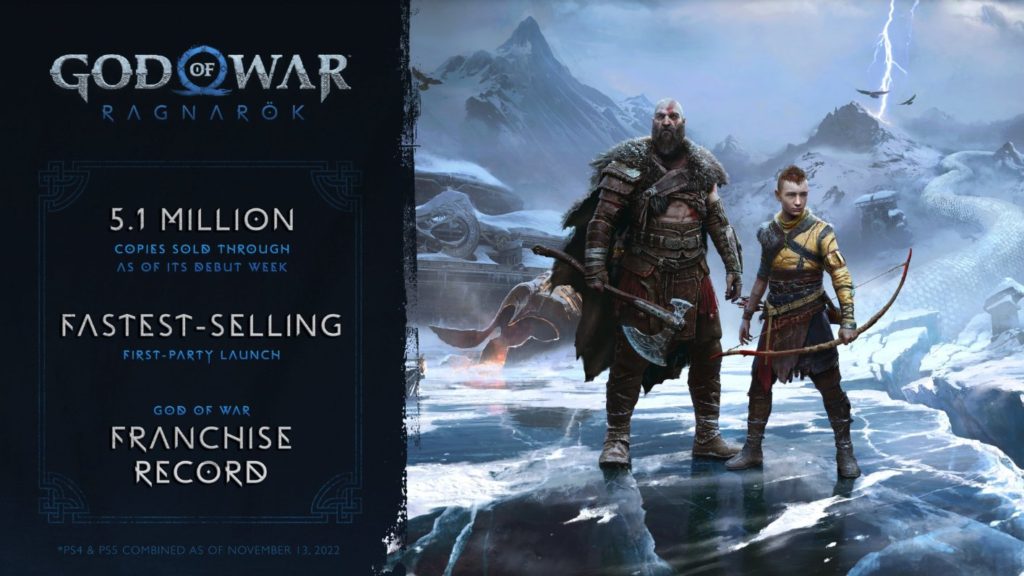
By the end of the review, some might think that I hate this game – but I am not. I think of it exactly as the title of the review says. It is the same amazing game Santa Monica always does, just for almost each of the things introduced or done in this game that made me go “wow!”, I saw something that made the opposite effect.
The story is great, and has both twists and well written introductions of new gameplay elements. But almost in every aspect it wins thanks to its grand scope, it also loses something that was good in the previous game. Like the clear goal, or the good balance between quiet exploration moments and active story bits. And the rhythm seems to be dictated more by circumstances rather than the characters’ goals or decisions.
The world is stunning. Creatively designed, and lovingly created. But deals worse with the cross-generational graphics transition, than their colleagues over in other SONY studios.
The gameplay is largely intact and perhaps the best and most perfect part of the game. More enemies, more tools, more verticality in combat arena design. Even though the attempt to make God of War even more of an RPG creates more inconveniences. Like the messy UI, the ultimately meaningless build options with armor, or the weapon and artifact upgrades that you end up ignoring more than using.
I write this not to discourage you from playing, but to lower the hyped expectations some might have towards this game. Go into this game calm, and clearheaded – and you will definitely have an amazing time, and remember this title forever.